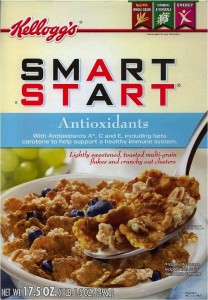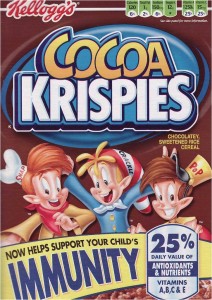I’ve been collecting items on food safety for the last week or two. Here’s a roundup for a quiet Friday in July:
Antibiotics in animal agriculture
USA Today does great editorial point/counterpoints and here is one from July 12 on use of antibiotics as growth promoters or as prophylactics in farm animals and poultry. This selects for antibiotic-resistant bacteria. If we get infected with antibiotic-resistant bacteria, too bad for us.
The paper’s editors think that use of antibiotics for these purposes is irresponsible: Our view on food safety: To protect humans, curb antibiotic use in animals.
Dr. Howard Hill, a veterinarian who directs the National Pork Producers Council, defends these uses of antibiotics: Don’t bar animal antibiotics.
The source of the 2006 E. coli 0157:H7 outbreak in California spinach
USDA and UC Davis investigators are still trying to figure out how the toxic E. coli O157:H7 got onto the spinach. Investigators did not find the bacteria on the spinach field itself, but they did find it in water, cattle, and cattle feces at a cattle crossing over a stream one mile away. Leading hypotheses: runoff from that stream or wild boar.
Subsequent studies showed low levels of E. coli 0157:H7 in wild animals and birds. A new study confirms that just under 4% of wild boar harbor the bacteria.
The investigators say the spinach outbreak of 2006 was the result of a combination of circumstances: “Everybody is starting to realize that maybe unusually heavy rainfall prior to planting could be an issue in terms of where water is routed.”
Dairy farming is moving into California’s Central Valley in a big way. Runoff from those farms will not be sterile and growing vegetables along water routes may be risky. Compost, anyone?
The chemical behind Kellogg’s cereal recall
Kellogg recalled 28 million packets of breakfast cereals last month because people reported funny smells and getting sick from something in the packaging. At first, Kellogg would not say what the chemical contaminant might be.
Then it said the chemical is methylnaphthalene. Mothballs! (Are they still making mothballs? Their smell is unforgettable)
Tom Philpott’s comments on Grist.com point out what’s really at stake: “And of course, the real scandal is what Kellogg’s is marketing to kids: a tarted-up slurry consisting mainly of sugar, corn products, partially hydrogenated oil, and food colorings. But that’s a whole different story.”
Salsa and guacamole are sources of foodborne illness
The CDC reports that salsa and guacamole are becoming more frequent sources of contaminants leading to illness. CDC started collecting information on sources of outbreaks in 1973. Its first outbreak due to salsa or guacamole occurred in 1984. Since then, there have been 136 such outbreaks. Restaurants and delis were responsible for 84%. Between 1984 and 1997, salsa and guacamole outbreaks accounted for 1.5% of total foodborne outbreaks. But the percentage rose to 3.9% from 1998 to 2008.
Moral: make your own!
China deals with melamine in milk powder
China is taking creative steps to prevent melamine from getting into milk powder and infant formula. To discourage fraudulent producers from boosting up the apparent level of protein in milk with melamine, it simply reduced the amount of protein required.
The latest on food irradiation
FoodSafetyNews.com presented a two-part series on food irradiation (part 1 and part 2), both of them quite favorable to the technology. As I discuss in my book, Safe Food, I don’t have any safety ojections to food irradiation, but I consider it a late-stage techno-fix for a problem that should never have occurred in the first place.
I conclude with my favorite quote from former USDA official Carol Tucker Foreman: “sterilized poop is still poop.”
Enjoy a safe weekend!



